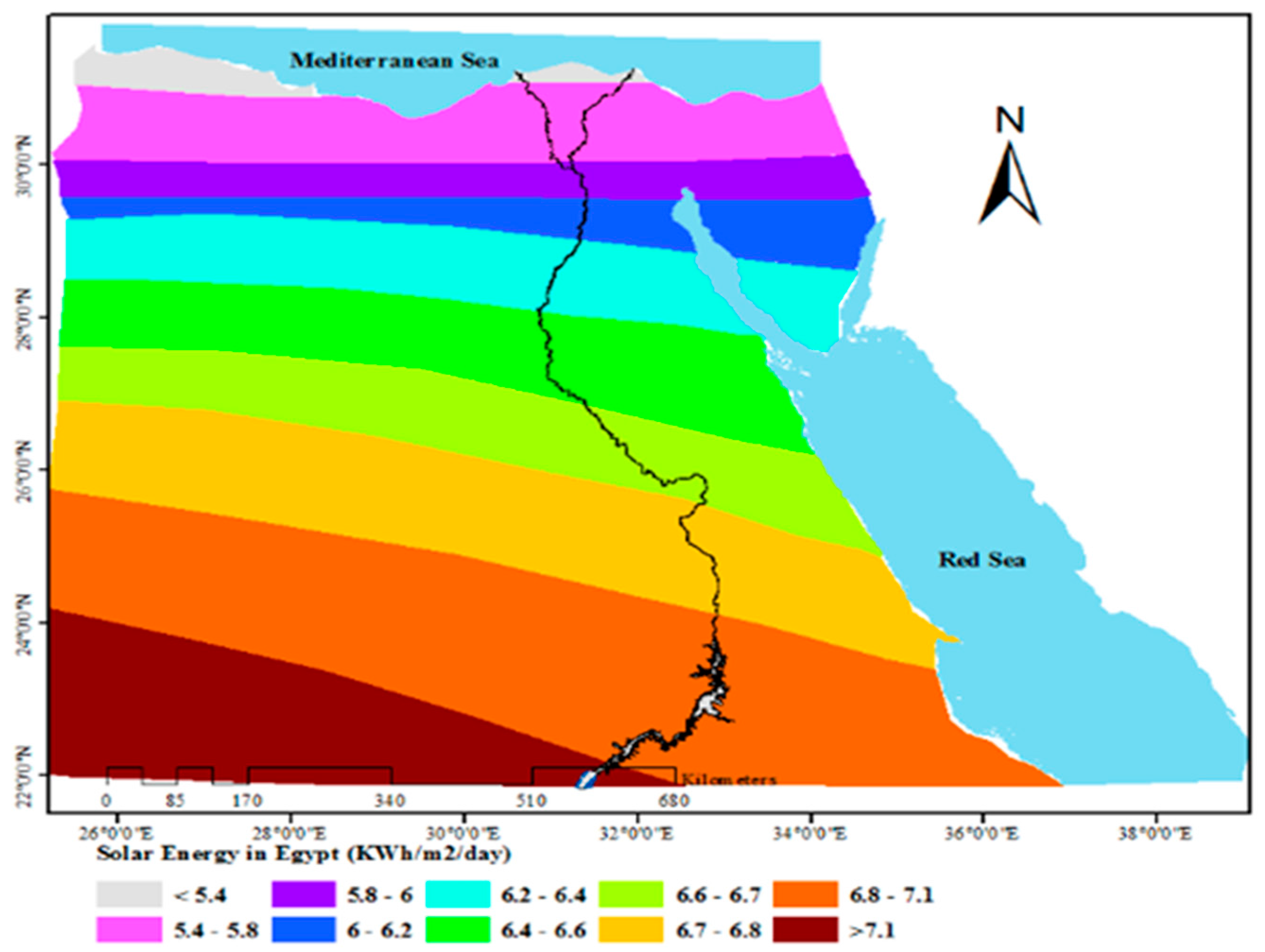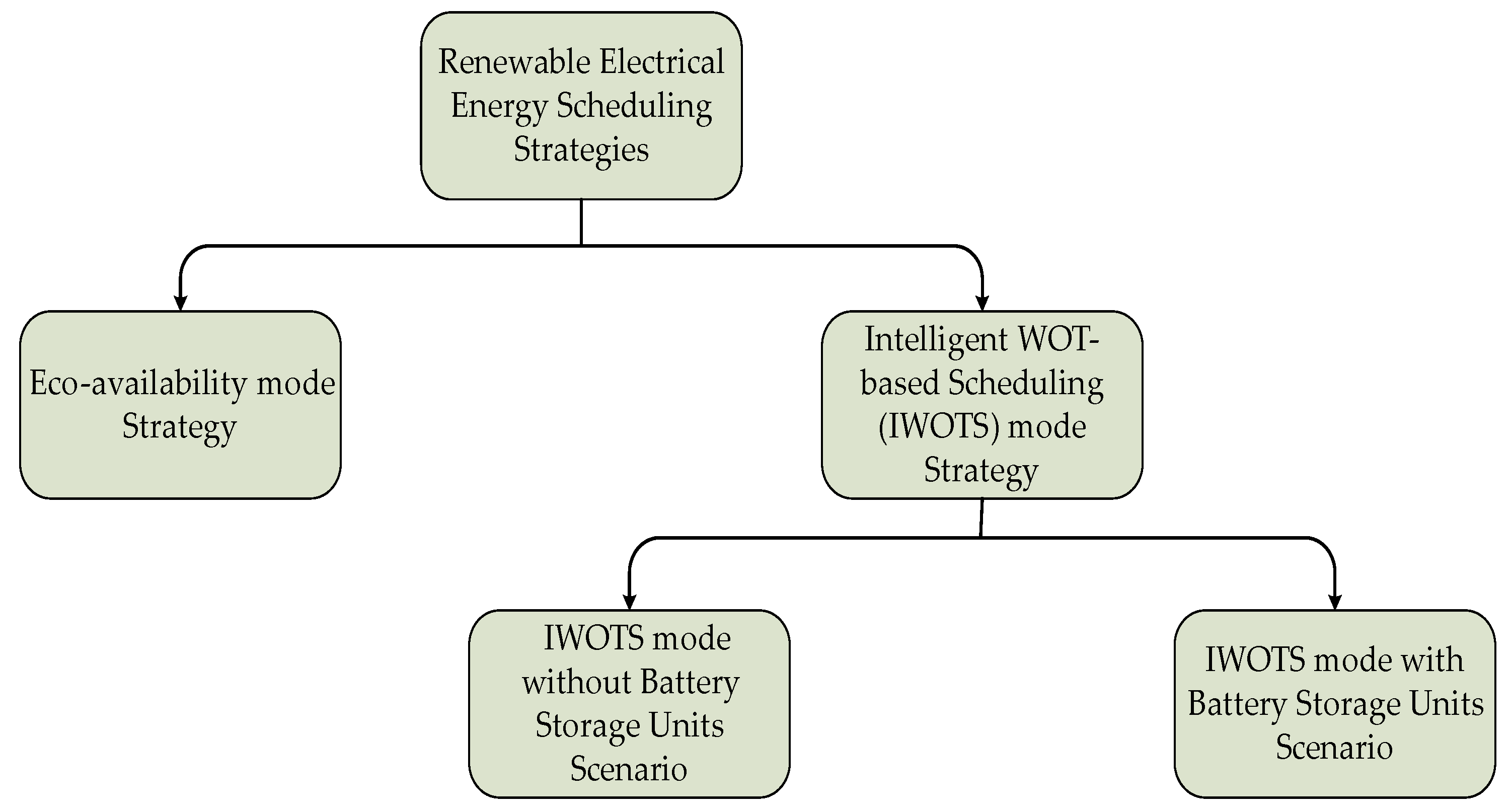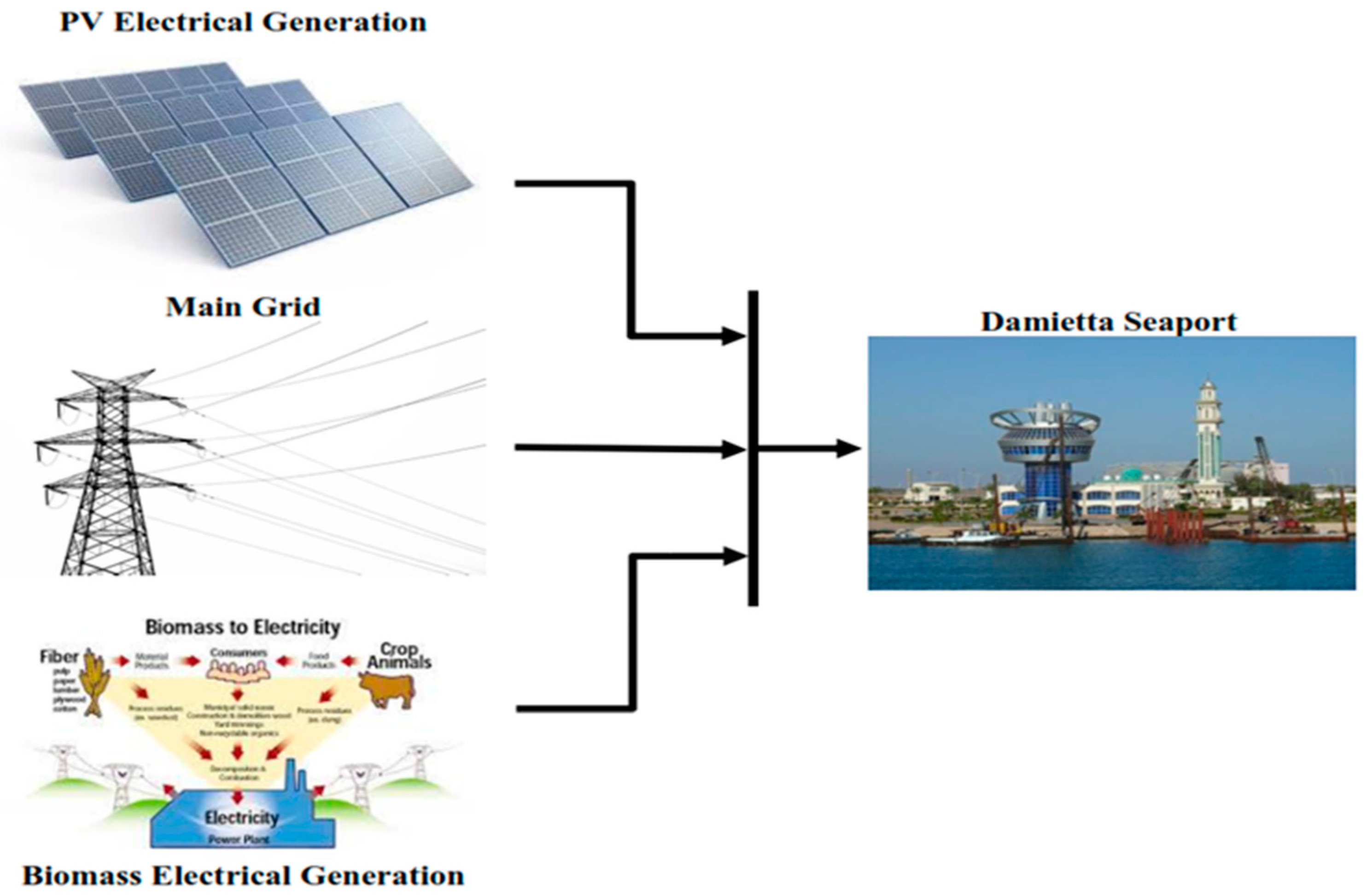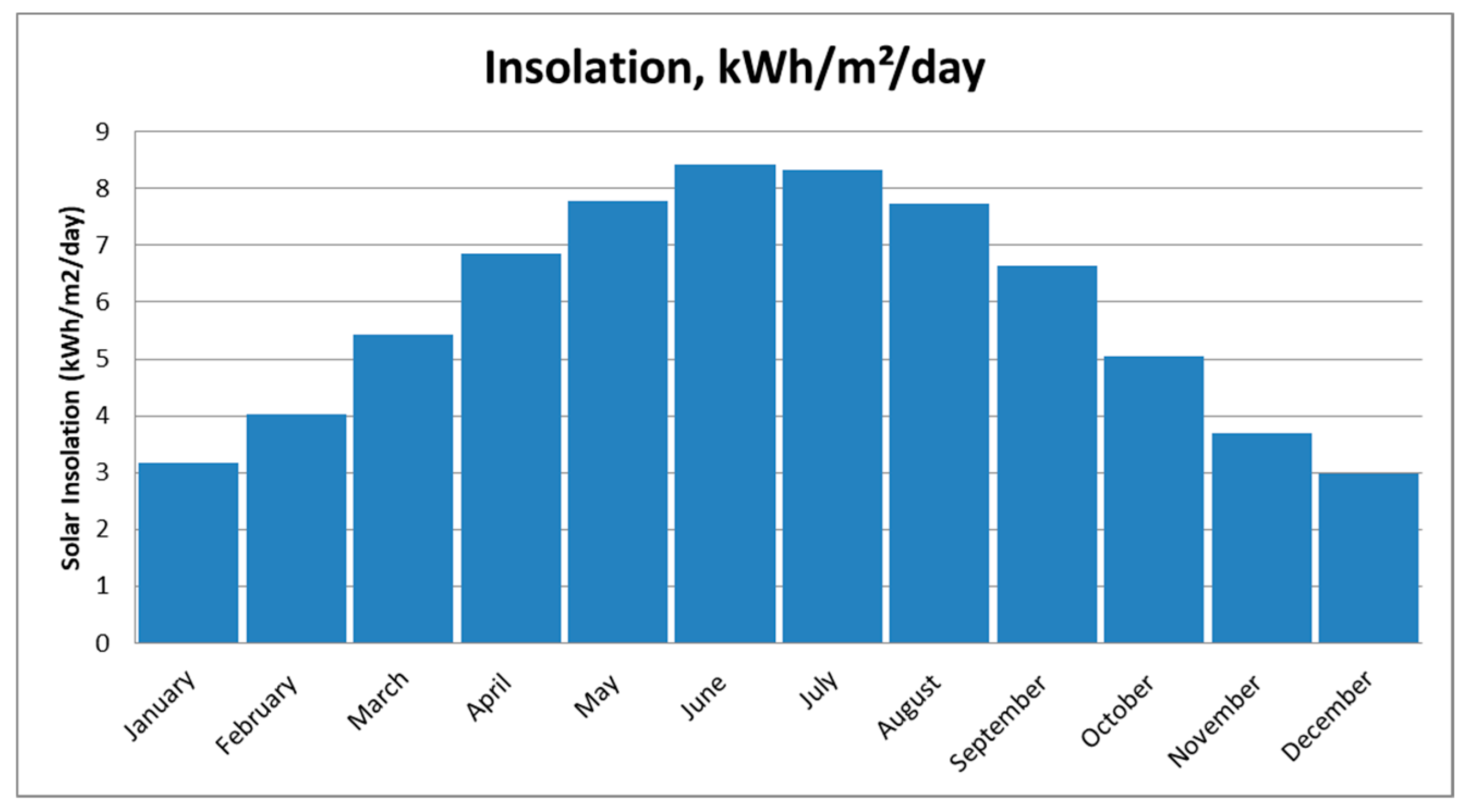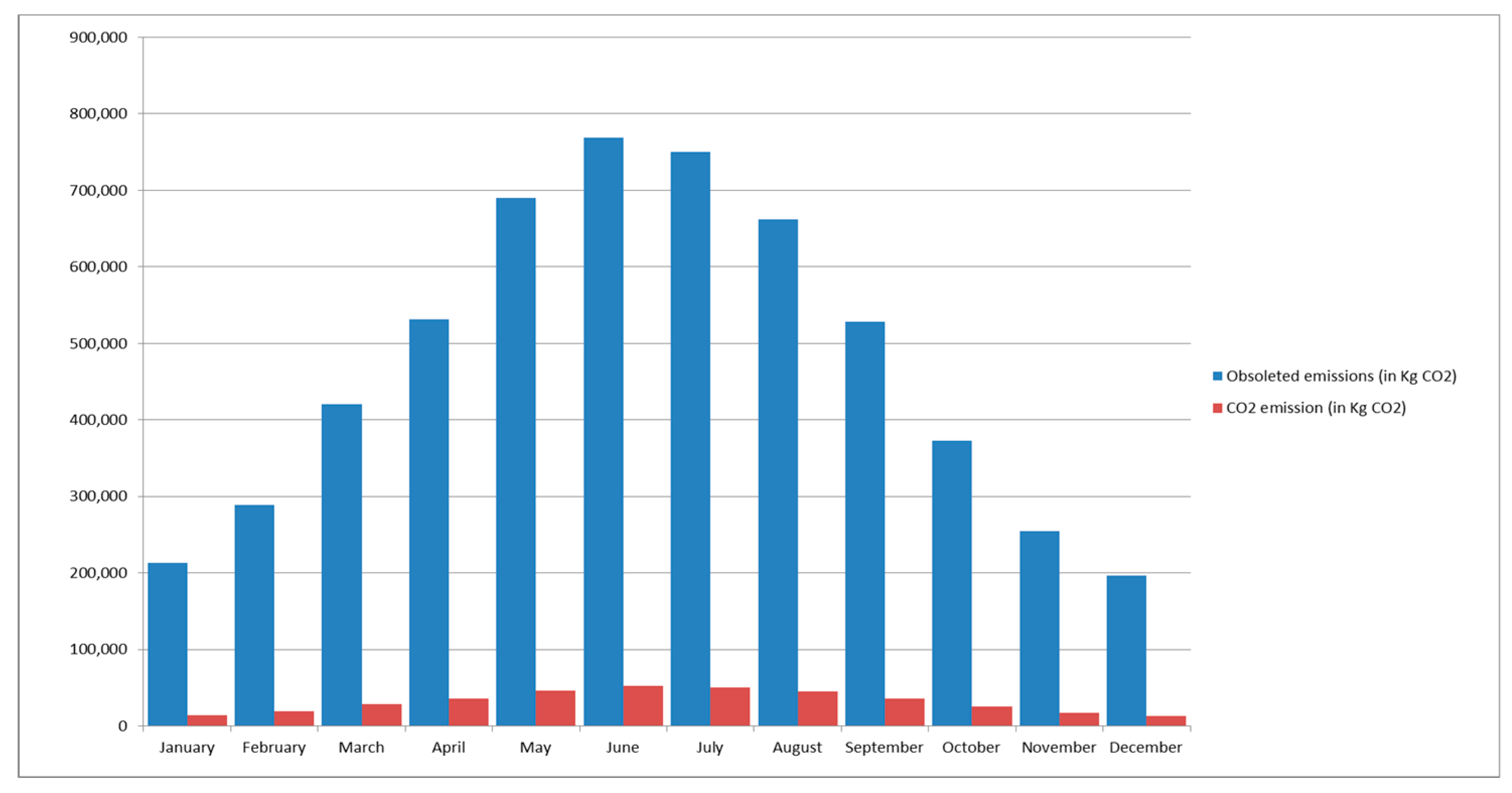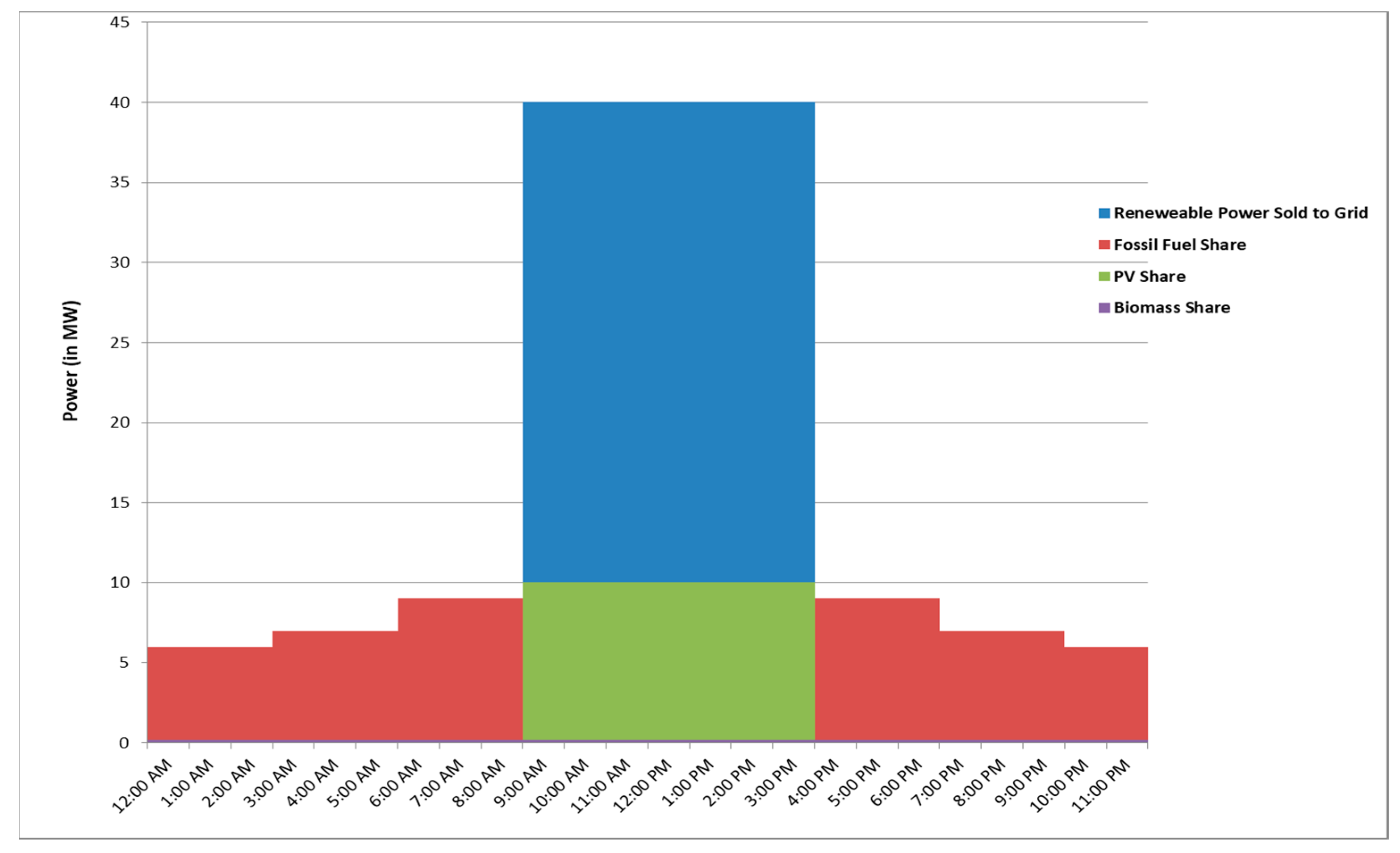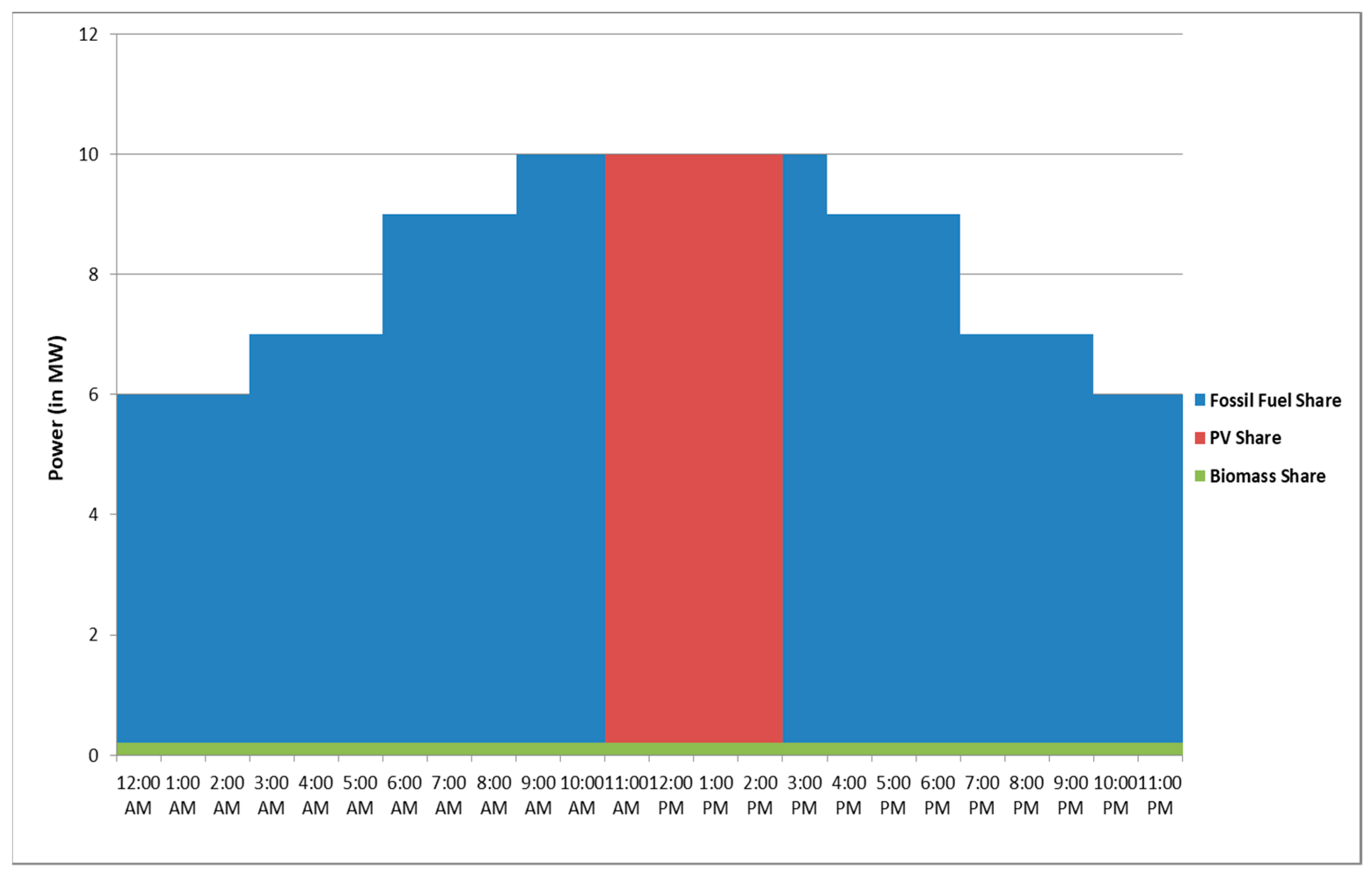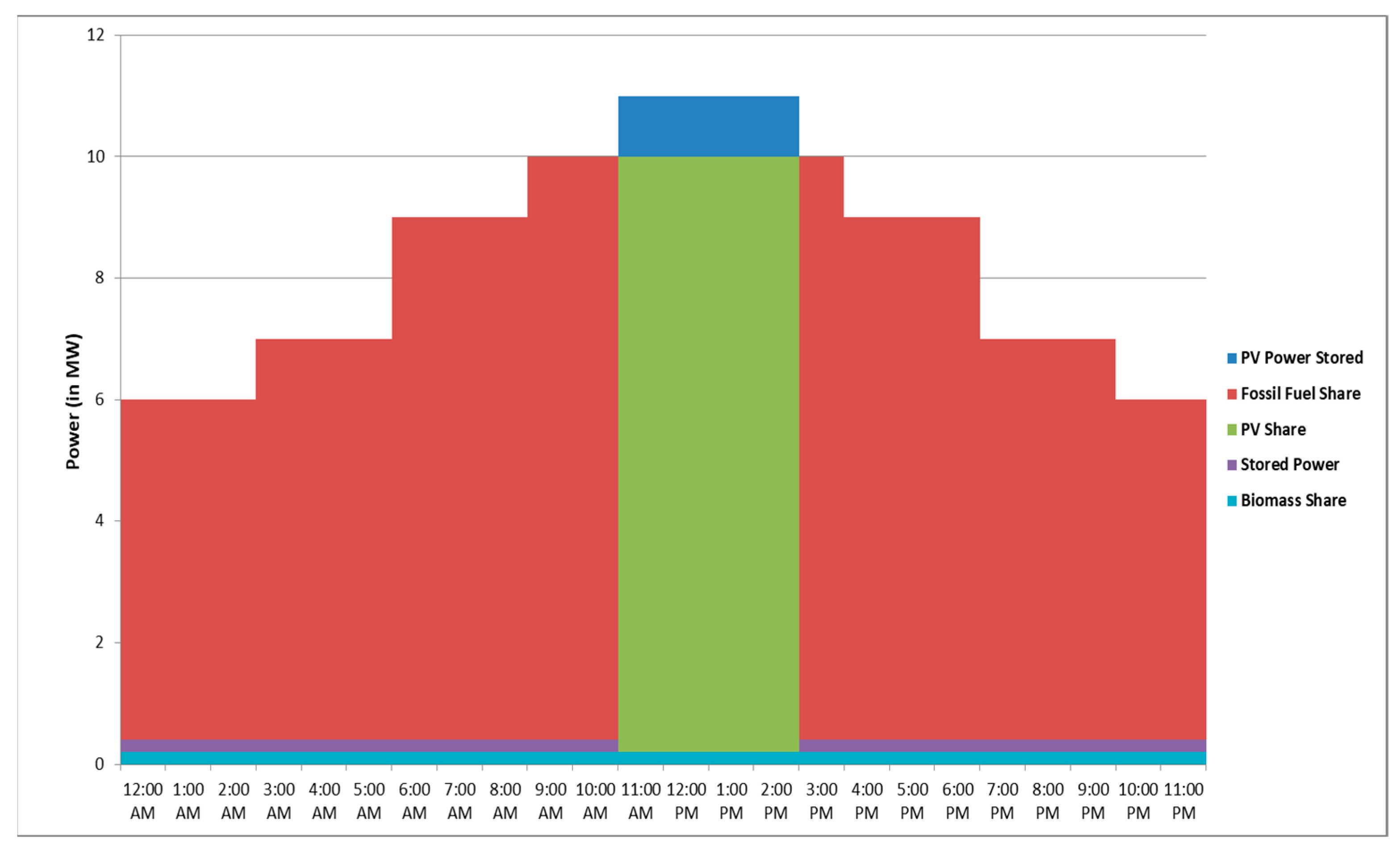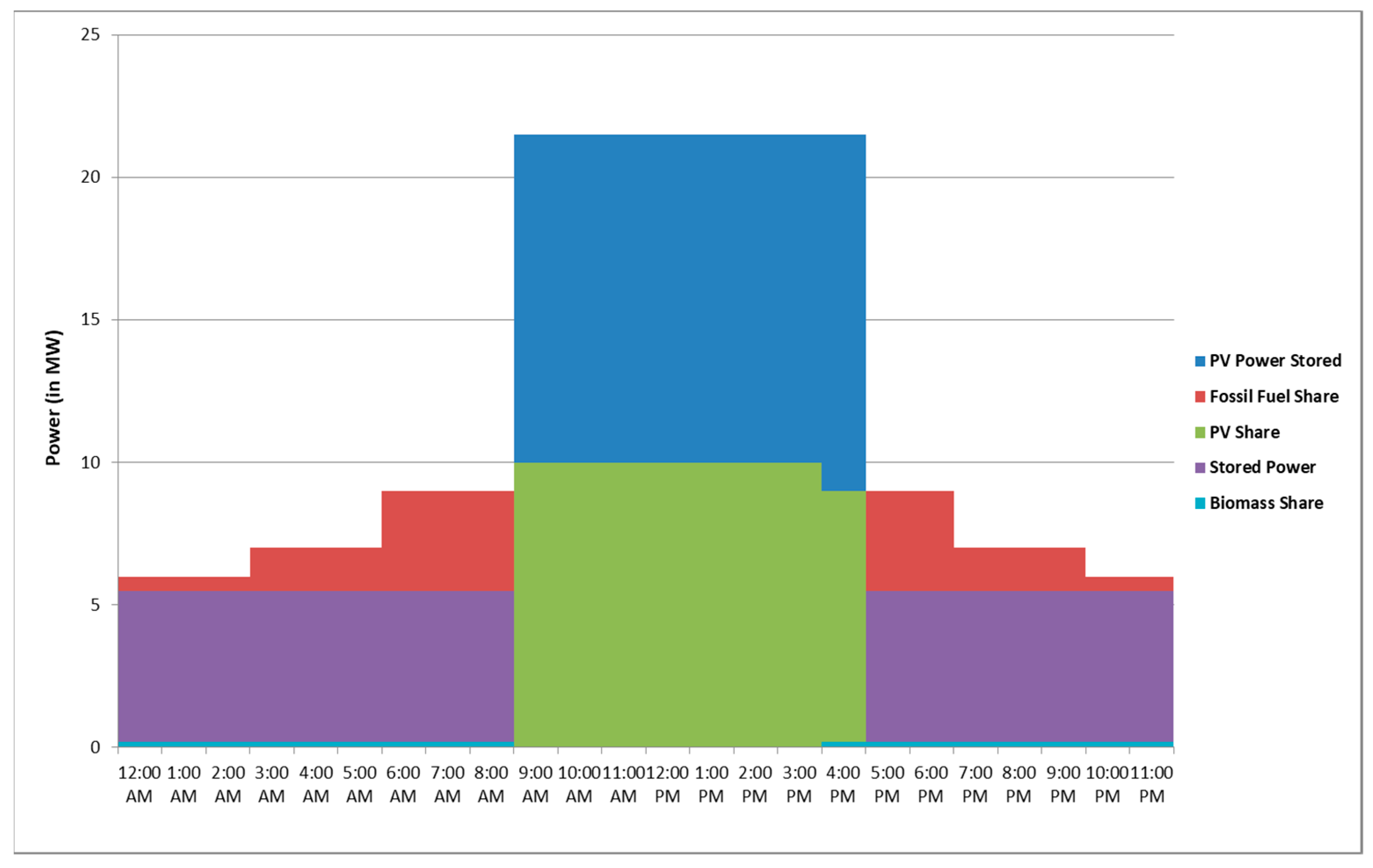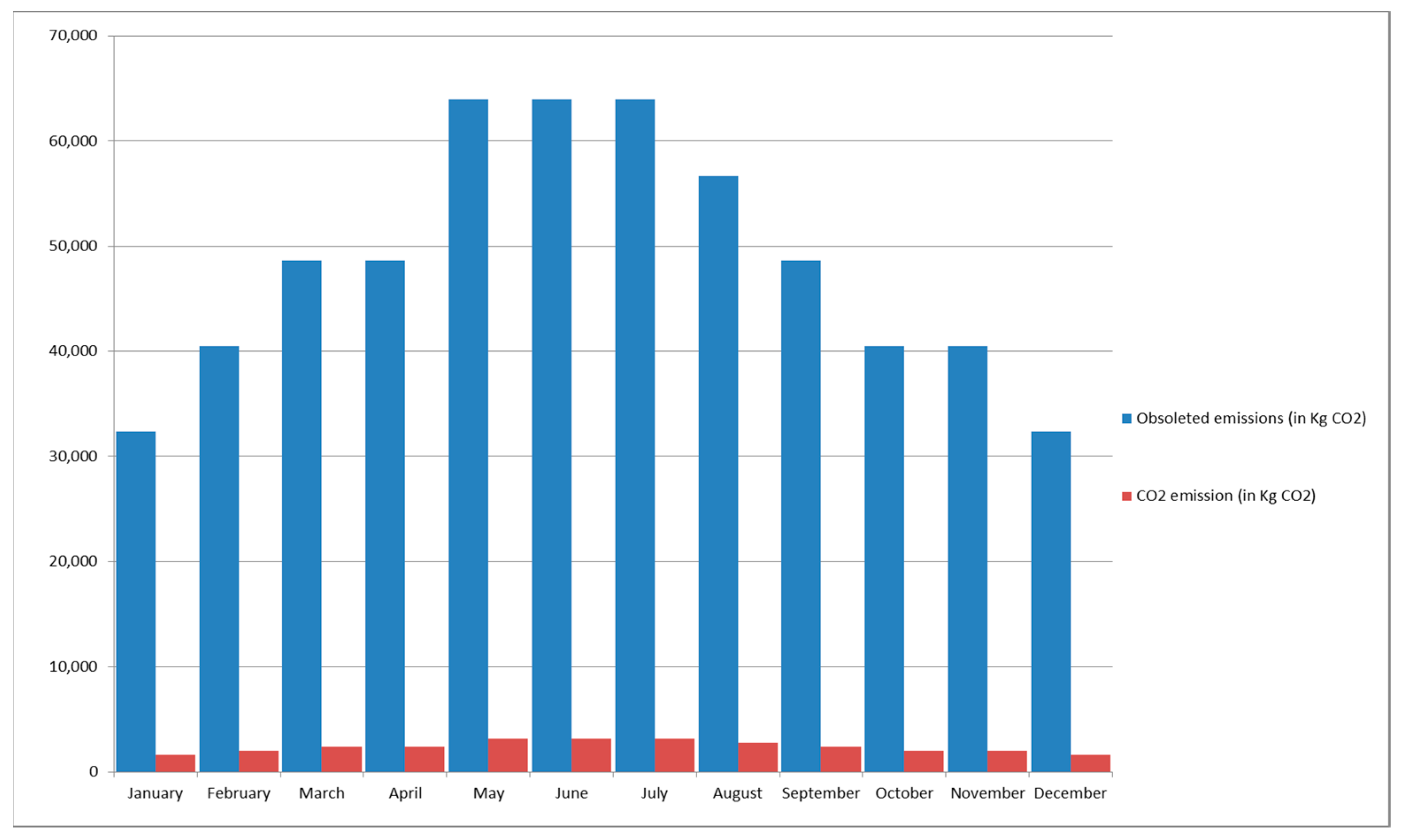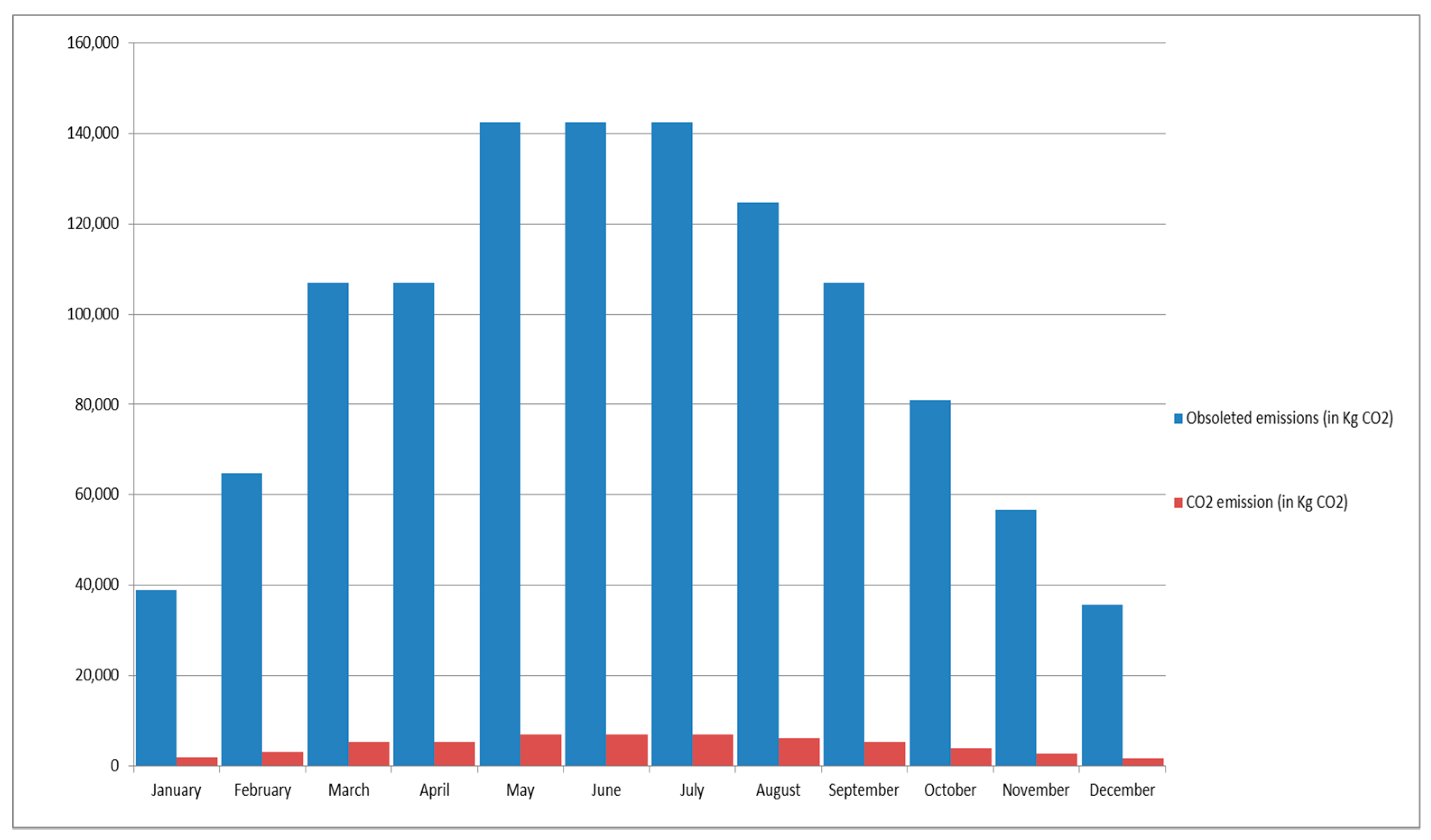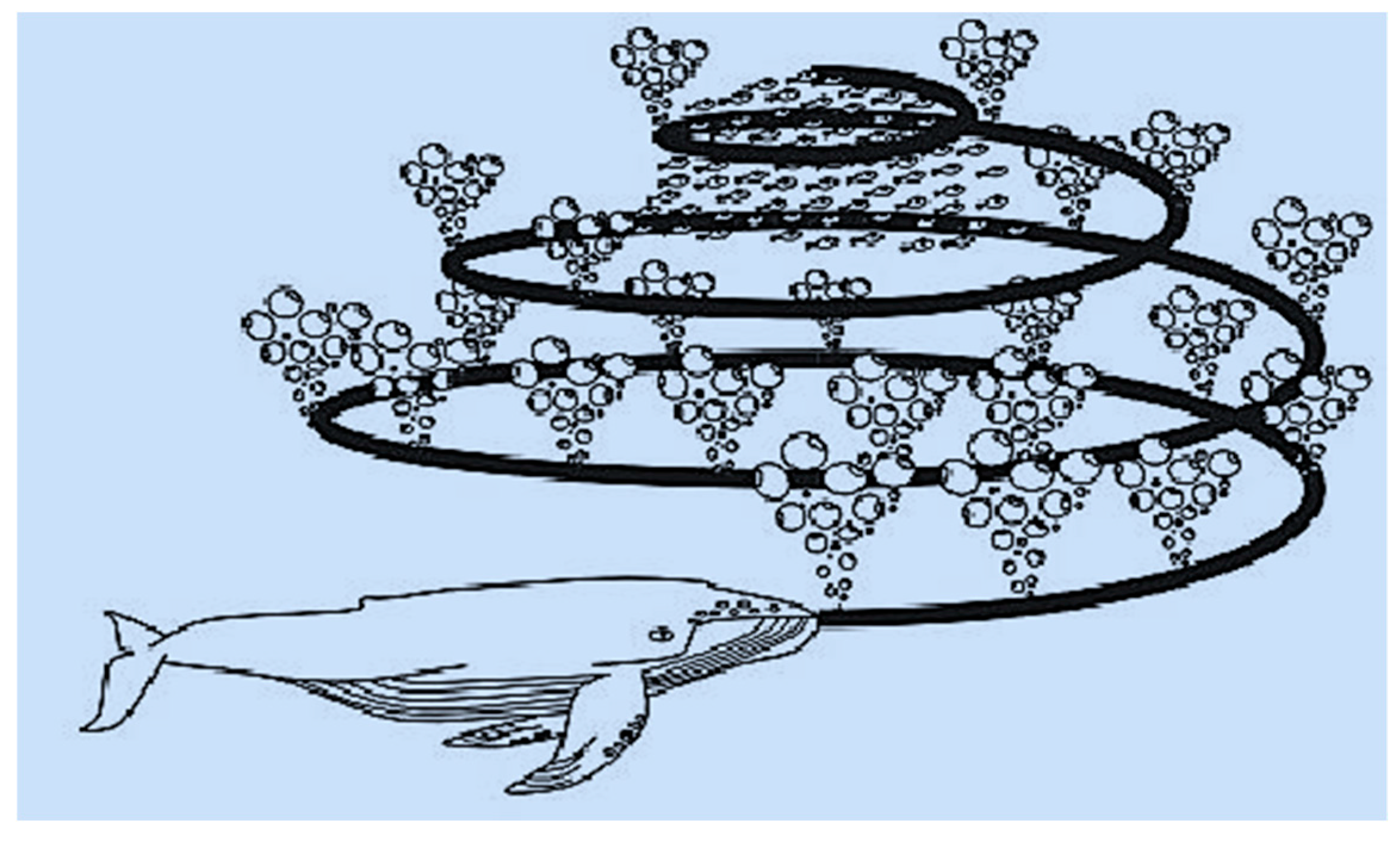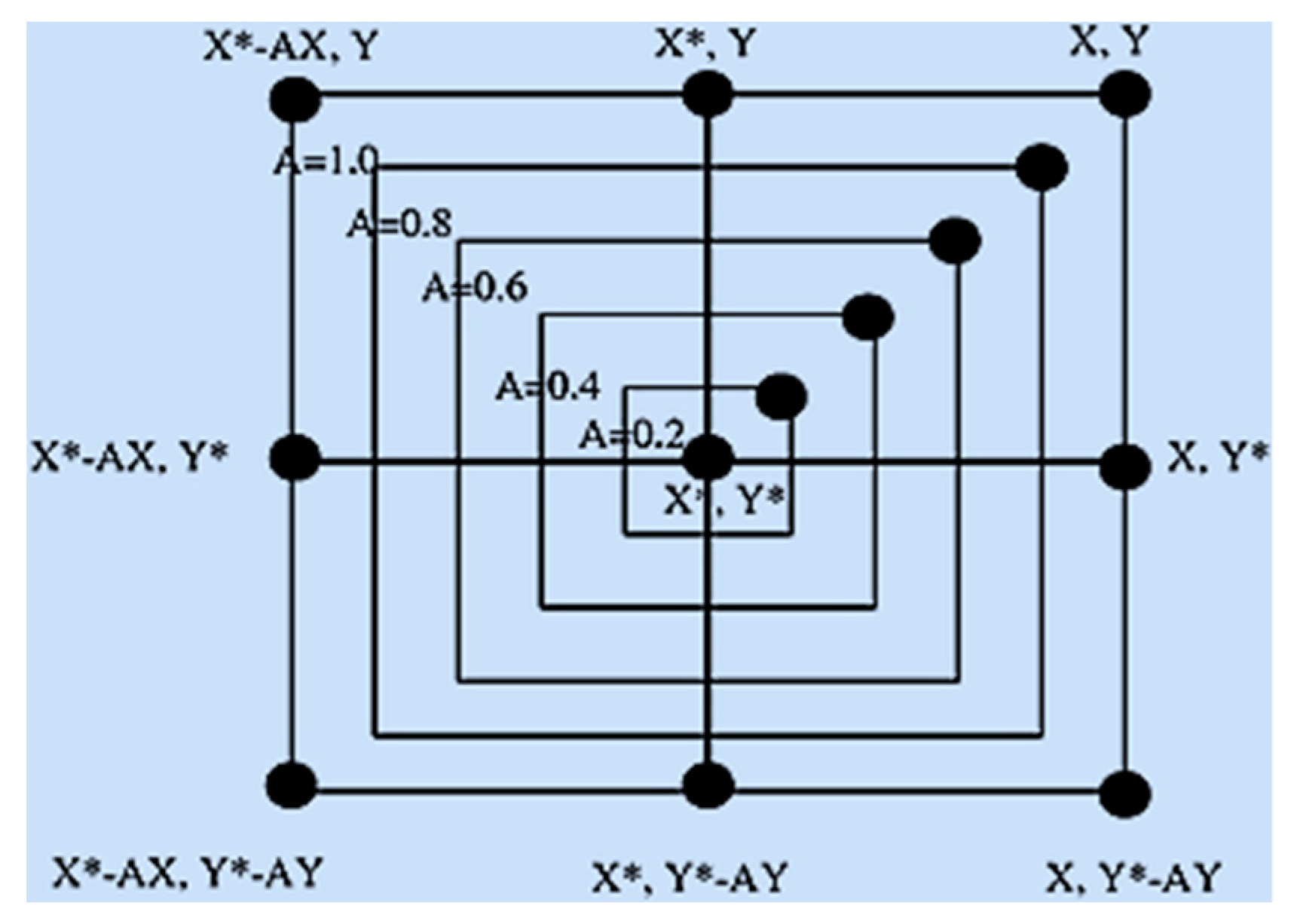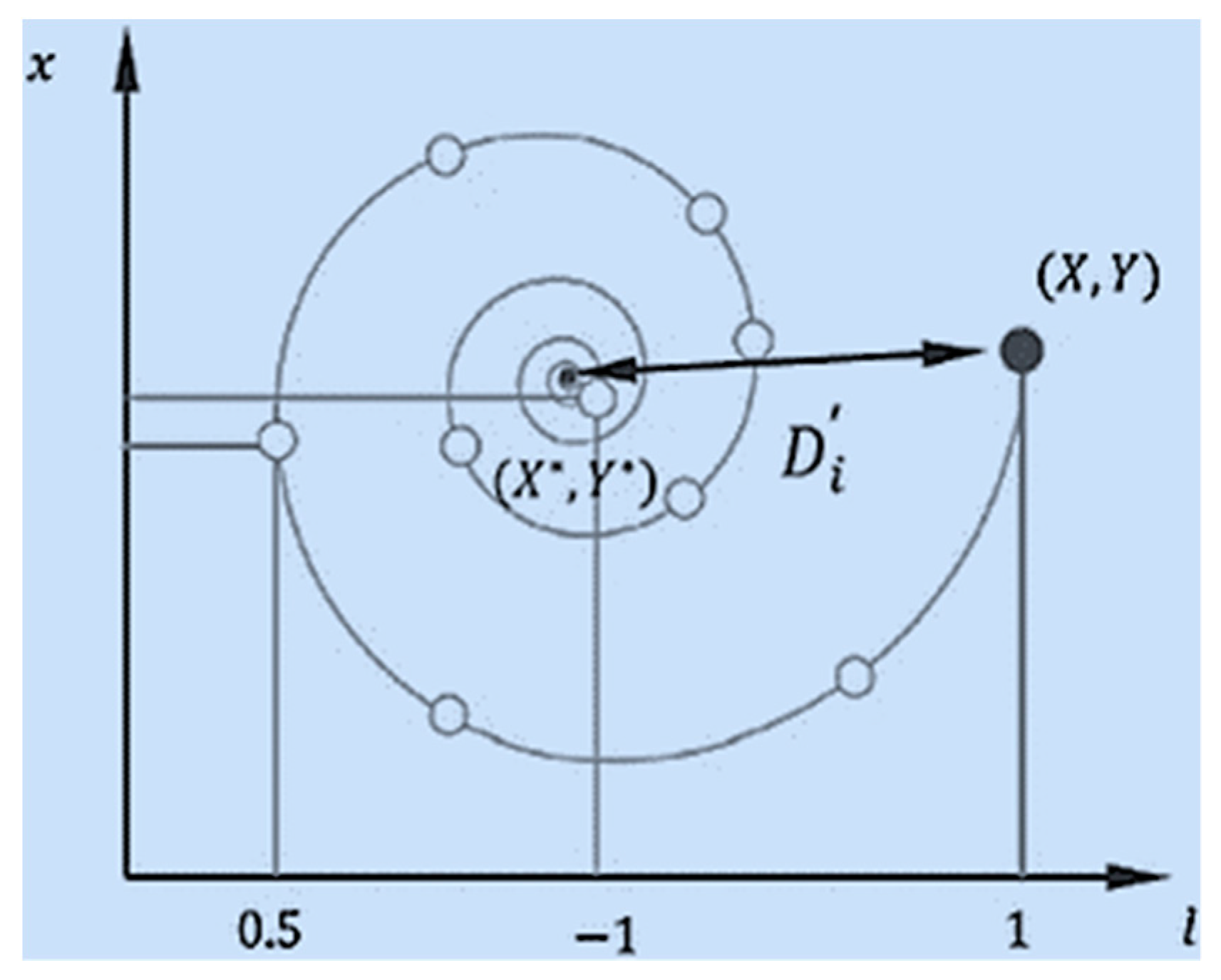1. Introduction
The great need to search for new environmental energy sources is increaseing, not only due to the expected shortage of conventional electrical energy resources, but also because of the increasing rate of pollution and harmful emissions. The concentration of heat-trapping greenhouse gases in the atmosphere has significantly increased throughout the preceding century as a result of burning fossil fuels, deforestation, and other causes. These gases act like a cover that make the world’s surface hotter than it ought to be the place as it captures a portion of the warmth emanated from the world’s surface and afterward this warmth is retransmitted back to the surface. Many publications concerned with Life Cycle Assessments of various electricity generation technologies have been performed throughout the past decades [
1,
2,
3,
4].
Within the electric power sector, assessments for the life cycle greenhouse gas “GHG” emissions for solar, wind, nuclear, and coal technologies showed that the total life cycle GHG emissions from fossil fuels are much higher and more variable than those from nuclear energy and other clean, renewable sources. Assessments showed that the generation of electricity from fossil fuel combustion is responsible for the vast majority of GHG emissions. For instance, electricity generated using coal-fired releases about 20 times more GHGs per kilowatt-hour than any clean, renewable energy sources whether it’s solar, wind or nuclear energy [
1,
2,
3,
4].
Carbon dioxide (CO
2) plays a remarkable part as the main GHG released from process of fossil fuels combustion. The atmospheric concentration of CO
2 has increased by over 40% from a preindustrial amount of 280 ppm (parts/million) to over 400 parts/million in 2016. With the increase of the CO
2 and GHGs concentrations, the universal average temperatures are growing [
1,
2,
3].
Substitutional clean energy sources, replacing the conventional fossil fuels electrical energy resources, should be renewable to uphold the objective of sustainable development. Photovoltaic (PV) and biomass energies are clean and renewable electrical energy generation resources [
5,
6,
7,
8,
9].
One of the noticeable renewable energy resources is biomass energy. Since the 1970s, some scientists became more interested in the possibility of replacing fossil fuels with biomass [
10]. Around 1975, “biomass” became the formal name of this energy [
10]. Although currently fulfillment of the majority of the energy needs and requirements is still attained through the combustion of fossil fuel, 14% of the world utilizes biomass. Generating energy could be attained through the thousands of tons of manure, mounds of agricultural waste and piles of sawdust.
In these days, around 7% of the yearly production of biomass is utilized worldwide. New technologies in biomass energy field are progressing, despite the little investment in biomass research. This small investment in the biomass area relegates biomass plants to small niche markets and individual efforts. These small-scale projects can become economically efficient and environmentally sustainable [
11,
12,
13]. Nowadays, the thermal and/or the electrical returns of biogas are targeted in many researches. Despite the fact that the electrical power generation from biomass is considered to be a promising task, that research mainly focuses on the thermal energy section [
6,
14,
15,
16]. In biomass technology, the improvement of the exhaust quality and its contents from hydrogen and carbon faces has seen many updates through the years. Many techniques and approaches, targeting the enhancement of the generation and the reduction of the CO
2 are investigated in [
17,
18,
19,
20,
21].
Lately, PV electrical power generation has been receiving considerable attention, especially, when a comparison is made with the traditional power systems. Thus, a PV system could be designed to fulfill the various requirements of applications and operations, through being either a stand-alone unit (distributed power generation) or connected to an electrical power grid. PV systems are static sunlight fuel systems, that avoid noise and pollution. PV modules have the capability of expanding and transporting in certain situations. In general, minimal maintenance is required for well-designed and properly installed PV systems, and additionally, they will have long-service lifetimes [
5,
7,
8,
9,
12,
13]. In 1952, the primal prototype is introduced [
22]. During the 1970s, cost reduction was attained through the enhancements performed in manufacturing, performance, and quality of PV modules [
23]. Following 1970s energy crisis, considerable efforts were progressed to develop PV power systems for both the commercial and residential utilizes, for stand-alone, remote power, and utility-connected applications. Solar energy harvesting technologies have progressed to exploit this almost unlimited energy utilization potential [
24]. Recently, the PV module production industry is growing extensively. Implementation of PV systems on buildings and correlation to utility networks is accelerating rapidly in the major programs of Europe, Japan, and the USA [
22,
25,
26]. Also, free software packages for PV electricity production allow quick estimations and calculations to be developed, discussed and compared [
27]. Photovoltaic Geographical Information System (PVGIS), PVWatts and RETScreen are three major examples of these free software packages, which can help in PV system simulation and estimation.
One of the pivotal environmental entities that emits different types of contaminants which affect the total atmospheric pollution percentage is seaports. Many researches and projects address the sustainable green seaport technologies [
28,
29,
30]. An ecological port (or green port) is a sustainable development port which is capable of both fulfilling the environmental requirements along with increasing their economic value. Creating a good ecological environment and high economic efficiency along with ensuring the overall harmonious and sustainable construction of the community’s economic, environmental complex ecosystem in the port is considered to be the main objective of the ecological port [
31]. There are 15 commercial and 44 specialized ports on the Egyptian coast [
32].
This paper discusses the impact of renewable electrical energy scheduling on carbon dioxide emission reduction through two strategies: (i) a port connected to the grid, which is called, eco-availability mode strategy and (ii) a standalone system which is called Intelligent Scheduling (IS) mode strategy (with and without storage unit consideration). Our eco-availability study is based on the basic technical-environmental (techno-env) operational availability conditions. The intelligent scheduling mode is an optimizing approach based on Reconfigured Whale Optimization Technique (RWOT) targeting the maximization the of carbon dioxide emission reduction. The RWOT cost function is derived in two cases, which are with and without considering the storage battery units. An integrated study is held for both strategies, regarding the environmental influences. The model of the green energy seaport is discussed and applied to one of the Egyptian seaports, which is the Damietta seaport.
The paper is divided into seven sections:
Section 2 gives an overview of the environmental effects of carbon oxides.
Section 3 provides an overview of biomass and photovoltaic general modeling and applications. The RWOT overview, algorithm description and the proposed cost function are illustrated in
Section 4.
Section 5 presents an integrated description for the proposed studied port (Damietta port). The simulation and results of both eco-availability strategy and IS strategy are clarified in
Section 6, while
Section 7 discusses the paper’s conclusions.
5. Damietta Port
Damietta Port is an ancient Egyptian city, which is located on the east bank of the Damietta branch of the Nile River [
60,
61,
62,
63]. It is situated on the Mediterranean Sea, to the west of Ras El Bar, and about 8.5 km to the west of the Damietta branch of the River Nile. Damietta Port is located 200 km from Alexandria port and 70 km to the west of Port-Said. The total port area is about 11.8 Mm
2. Water area is 3.9 Mm
2, that will be increased to 4.5 Mm
2. The land area is around 7.9 Mm
2, that will be increased to 8.6 Mm
2. The ratio of land area to total port area is about 2:3. The port is connected with the main transport network of Egypt. The access channel is about 11.3 km long, 300 m wide and 15 m depth. The Nile river is connected to the port via a barge channel, which is 4.5 km long, 5 m deep, and 90 m width. The Port of Damietta is the capital of the Damietta Governorate. It is reported to be the wealthiest governorate in Egypt.
Nowadays, the channel has been dredged and port facilities upgraded thus the Port of Damietta is capable of relieving the maritime congestion in Alexandria. The Port of Damietta is famous for various types of industries which include the manufacturing of clothing and furniture, leather working, fishing, and flour milling. The Port of Damietta is connected to the Nile via a canal, which transformed it to be an important maritime center where most of the cargo volume is containers. The Port of Damietta now contains a liquefied natural gas plant, and a methanol plant producing 1.3 million tons per year that reaches the global methanol market. The Port of Damietta is also a busy fishing port [
60,
61,
62,
63]. A detailed description of the post of Damietta and the ship traffic is available in [
61]. Also, maps of Damietta port’s location in Egypt and the seaport plan can be found in [
62,
64,
65].
7. Conclusions
Scheduling of PV and biomass electrical energy generation to partially replace the conventional fossil fuel sources in a green energy seaport, is studied in this project. As carbon dioxide emissions affects the greenhouse gas and global warming phenomena, the impact of the environmentally friendly electrical energy generation unit on the reduction of carbon dioxide emissions and saving the environment is the main target of this research. Renewable sustainable electrical power sources are annually scheduled to be adapted with the available generation inputs. The study is based on two main strategies, which are eco-availability mode and Intelligent Scheduling (IS) mode. The Intelligent Reconfigured Whale Optimization Technique based Scheduling (IRWOTS) mode is executed for two scenarios. The first scenario is considering the system without battery storage units, to avoid the storage techniques’ problems of the excess generated power, while the storage units are considered in the second scenario.
Photovoltaic generation depends on the average efficient daylight and solar insolation, which vary monthly and from one season to another. Regarding biomass electrical generation, it is suggested that total organic waste capacity of the community will be utilized in generating electrical power. The biomass generation is almost constant over the whole year. Sustainable efficient green energy port pattern is addressed by applying the combination of photovoltaic and biomass electrical power to Damietta port. It is also proposed that the extra generated green electrical energy be sold to the Egyptian Unified Electrical Power Network and the neighboring loads. The generation scheduling of biomass and photovoltaic electrical energy combination is assumed to vary from 40.2 MWh/day (in December—IRWOTS strategy-without battery storage unit) to 966 MWh/day (in June—Eco-availability strategy). The daily carbon dioxide emission oscillates between 1840 kg CO2 and 52,163 kg CO2. It results in clear daily carbon dioxide emission reduction that fluctuates between 36,240 kg CO2 and 773,077.6 kg CO2. The rate of obsoleted carbon oxides emission encourages the global societies to follow up the proposed model for the environment sake.
